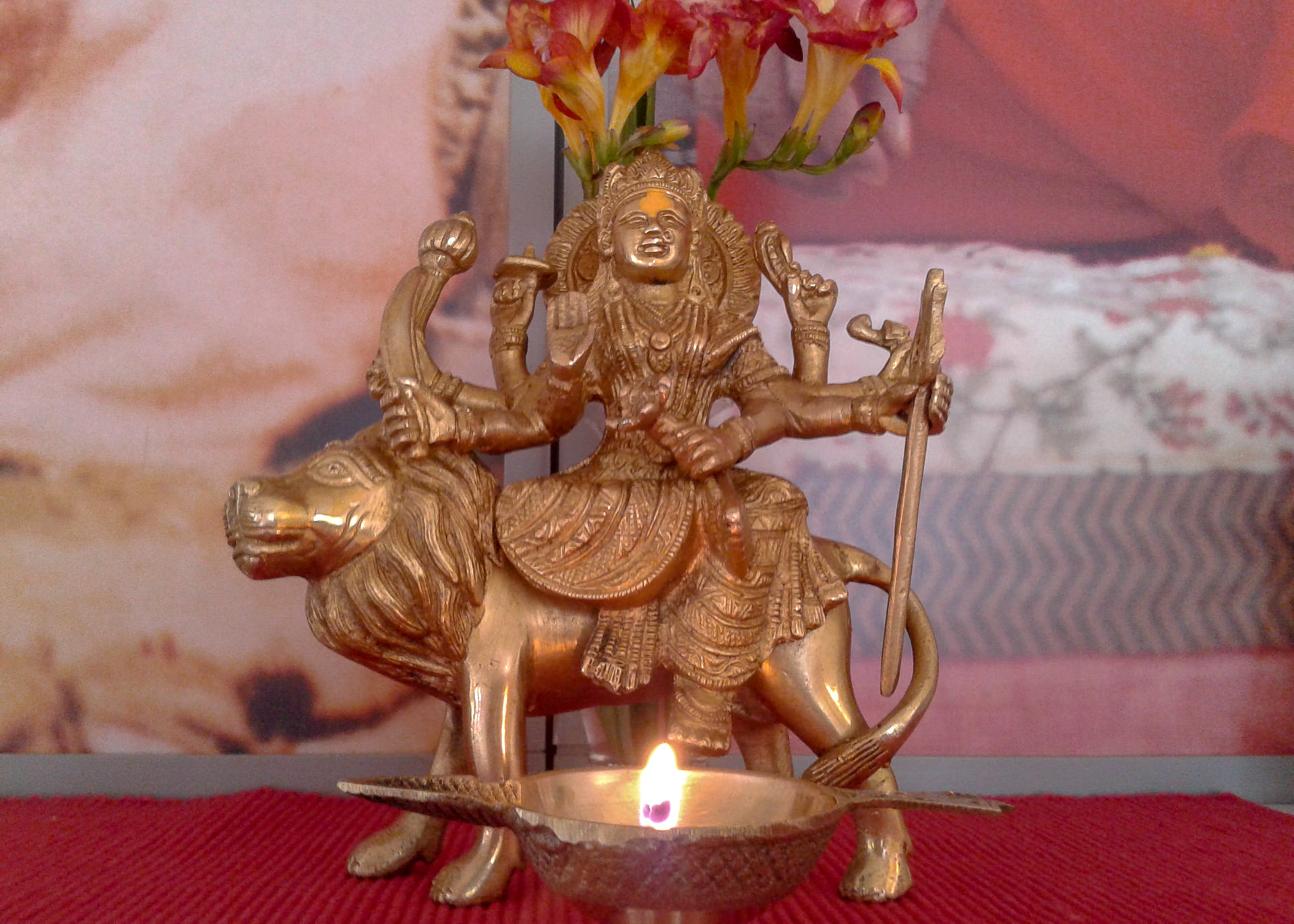Literally Navaratri means nine nights. This festival is celebrated twice a year, once in the beginning of summer – Ram Navaratri when Lord Rama is worshipped, and in the beginning of winter – Durga Navaratri, when Divine Mother is worshipped.
Navaratri is divided into three parts, each consisting of three days. The first three days are dedicated to Durga, who destroys all our impurities and imperfections. The following three days are dedicated to Lakshmi, the aspect of Divine Mother as a giver of spiritual prosperity. The last three days are dedicated to worshipping Sarasvati, the aspect of Divine Mother as Goddess of wisdom. To be completely successful in life, we need all three aspects of Divine Mother. Navaratri is traditionally celebrated in India by placing on the altar the image of Durga for the first three days, the second three days the image of Lakshmi and the last three days the image of Sarasvati. Those days are observed with fasting (on milk and fruit) and prayers to Divine Mother in all the three aspects.
Durga
Lakšmi
Sarasvati
On the ninth day of the spring Navaratri people celebrate Ram Navami, the birthday of Lord Rama. Lord Rama is born on the ninth day of the month Chitra, therefore his birthday is celebrated as “Navami” – 9. The Indian mathematicians and philosophers consider nine to be a magical number. There are nine main forms of the Goddess Durga and nine ways of Bhakti – devotion.
The tenth day of the autumn Navaratri is known as Vijaya Dasami, the day of great victory, and it is one of auspicious days of the Hindu year when children start to acquire new skills. Das and Hara mean the ten-headed Ravana who has the strength of ten elephants; Hara means that Ravana lost his battle over Lord Rama. Twenty days after follows Divali, the day of return of Lord Rama to Ayodya.
